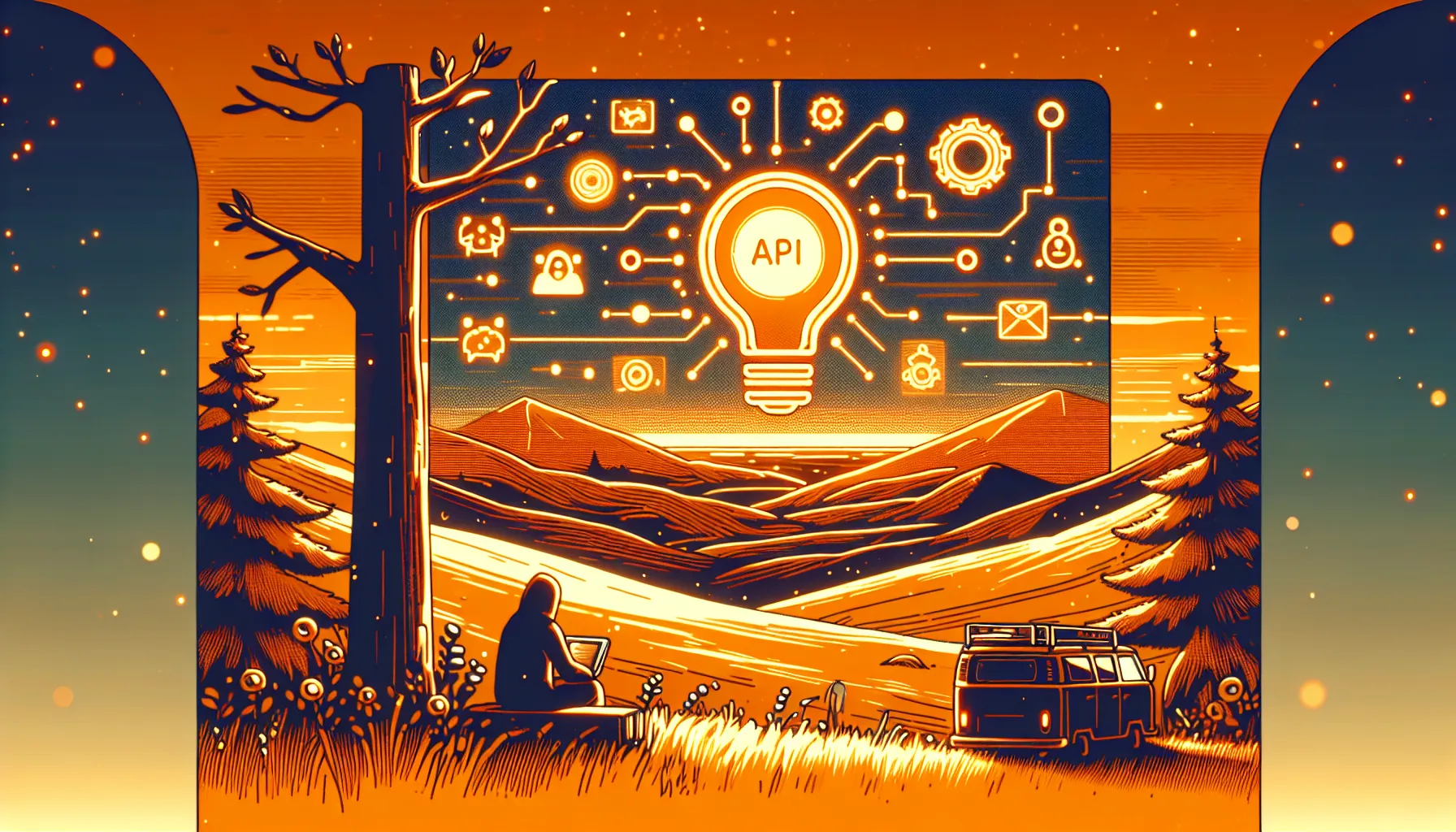Uncovering the Hidden Paths: A Guide to Discovering Website APIs
Thu Aug 17 2023
|API Archive
APIs (application programming interfaces) are the behind-the-scenes messengers that allow different software programs and platforms to communicate with each other. Even if you don’t realize it, you use APIs every day whenever you check the weather, scroll through social media, or stream music. APIs transmit data between the apps on your phone and web services around the world.
But did you know that many websites also have hidden APIs that aren’t immediately obvious to regular users? Uncovering these concealed APIs can provide tech professionals and enthusiasts special access to data and functionality. With some detective work, you can leverage these powerful tools for automation, data analysis, app development, and more. This guide will equip you with the knowledge to start exploring hidden APIs yourself.
The Gateway to Interconnectivity: Understanding APIs
You can think of an API as a translator that takes requests and instructions from one piece of software and communicates it to another in a language it can understand. The API formats the message in a standardized way so that very different systems can share and make use of the same data.
APIs facilitate interconnectivity behind the scenes of the digital world. For example, when you book a rideshare on your phone, the rideshare app uses the company’s API to ping your location, match your ride request, and process payment. The API is the intermediary that makes this digital handshake possible.
Uncovering hidden APIs gives developers and power users direct access to the underlying functionality of websites and apps for integration into their own projects. The ability to tap into these resources unlocks exciting possibilities.
Decoding the API Language
API stands for Application Programming Interface. An API consists of code containing a set of commands, functions, protocols, and objects that programmers can use to build other software and applications.
At its core, an API provides access points called endpoints. Endpoints are the mechanisms through which systems make API calls or requests and send data back and forth.
For example, a weather API may have an endpoint like:
https://weather-api.com/current-weather
When a program calls this endpoint with the required parameters like a zip code, it will receive a data response containing the current weather conditions for that location.
Learning to identify and interpret API endpoints is key to figuring out how to interface with hidden APIs.
The Treasure Hunt Begins: Tools for API Discovery
Now that you understand the basics of what an API is, let’s explore some techniques for uncovering hidden APIs on websites.
Mastering the Developer Console
One of the most useful tools for API discovery is right in your browser – the Developer Console. Here’s how to access it:
- Chrome: View > Developer > Developer Tools
- Firefox: Tools > Web Developer > Toggle Tools
- Safari: Preferences > Advanced > Show Develop menu
Once opened, look for the Network tab. This shows all requests made when loading a webpage. Here you can inspect the type of request, status, and data sent and received.
Filter for XHR requests, which often contain API calls. Click on a request and examine the Headers tab – this often reveals the endpoint URL, which is your gateway to the API!
With some exploration, you can use this technique to uncover hidden APIs on many websites.
Diving into the Source
Another way to discover APIs is directly through the source code. Here’s how:
- Right click on the webpage and choose View Page Source or View Source to open the code.
- Ctrl + F on your keyboard to open search. Look for keywords like “API”, “endpoint”, “XHR”, “fetch” etc.
- When you find relevant sections, look for URL patterns that may indicate API endpoints.
Often, JavaScript files linked in the source are where you’ll find API calls. Analyzing these can reveal endpoint patterns.
The Art of Web Scraping
Web scraping uses software tools to programmatically extract and collect data from websites. When done ethically and legally, it can reveal APIs not publicly documented.
For example, a web scraper could mimic user actions like button clicks then record the network requests to find associated APIs. This data can then be analyzed to understand API endpoints and parameters.
However, be mindful that aggressive scraping can overload servers so moderate your requests. Only target sites you have permission to access.
The Adventurer’s Toolkit: Enhancing API Identification
Expanding your toolkit with a few key software tools can take your API discovery to the next level:
-
Postman – This powerful API development platform has features to simplify sending requests and analyzing responses. The Postman Interceptor allows you to easily capture network requests.
-
API Fuzzer – This tool lets you automate API calls to brute force discover undocumented endpoints.
-
API Harmony – This browser extension organizes and visualizes API requests to help you understand and reverse engineer API structures.
-
Import.io – This web data extraction platform has a point-and-click scraper and AI to help uncover and leverage APIs at scale.
Check out API directories like ProgrammableWeb to search thousands of public APIs by category and popularity. Exploring examples can inspire your own API projects.
Learning from the Trailblazers: Real-World Examples
Studying how developers have leveraged the APIs of popular platforms sheds light on the power of API discovery:
Slack API
By reverse engineering Slack’s web and mobile app network requests, developers uncovered powerful APIs not in the public docs like files.upload for attaching files to messages. This enabled building Slack bots with enhanced capabilities.
Google Maps API
Before Google released their Maps API, early web developers extracted data by scraping sites using Google Maps. By detecting patterns in requests, they created custom tools harnessing Google’s mapping data.
Spotify API
Spotify’s Web API allows developers to build applications that tap into Spotify’s music data. Third-party apps use it for lyric displays, enhanced playlists, music discovery, and connecting Spotify to other services.
Navigating the Maze: Overcoming Challenges
API exploration doesn’t always go smoothly. Here are some troubleshooting tips:
-
Authentication – Many APIs require keys or tokens. Try inspecting network requests to see how the official apps authenticate.
-
Rate Limiting – Spread out your requests to avoid hitting usage limits. Use automation tools to add delays between requests.
-
Obfuscation – Important info may be minified or encrypted. Online converters can help deobfuscate code.
-
Legal Gray Areas – Avoid violating terms of service and access rights. Only target sites you have explicit permission to interact with.
Conclusion
Uncovering hidden APIs opens up a world of possibility for developers. While it takes some tenacity, the payoff of direct access to underlying data and functions is immense. Add API exploration to your skillset with the techniques outlined here.
Happy treasure hunting! With the right tools and mindset, an exciting landscape of undiscovered APIs awaits. Just remember to embark on your adventures ethically and legally. As the saying goes, “With great power comes great responsibility.”


